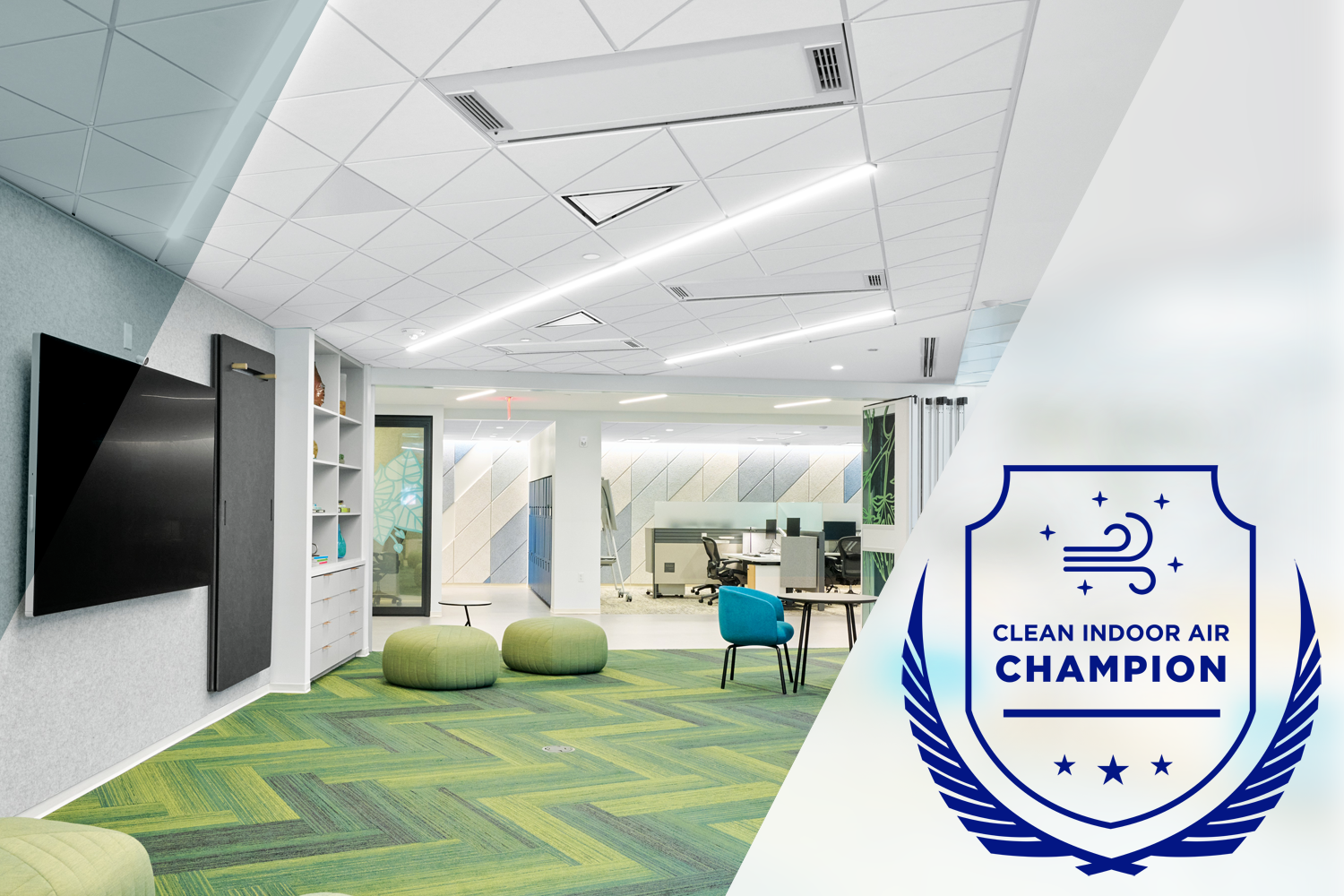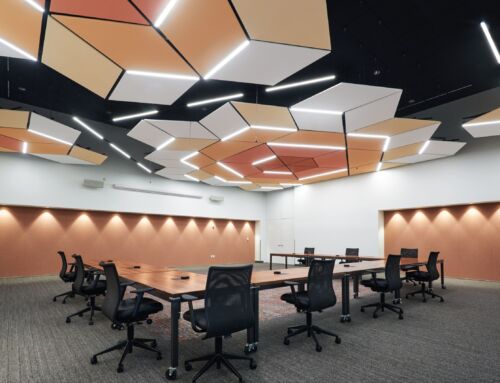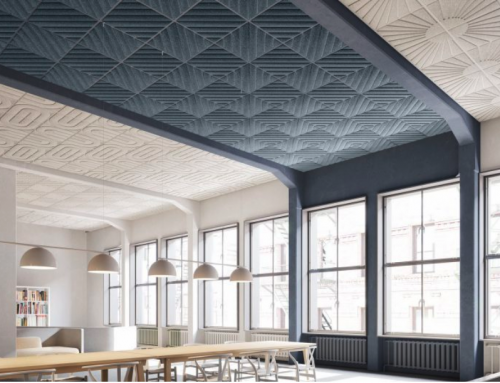We spend roughly 90% of our lives indoors, and the past few years have highlighted how our well-being is directly affected by our physical surroundings. Indoor Environmental Quality (IEQ) consists of several key factors: air, sound, light, temperature, and more.
Making sure we have healthy air, impactful acoustics, sufficient lighting and thermal comfort are essential to health and well-being in spaces where we live, work, learn, heal and play. Explore how you can create a space with outstanding IEQ, starting at the ceiling, when you choose sustainable, healthy building solutions.

Indoor Environmental Quality
Learn the importance of indoor environmental quality and how it impacts the success of your project.
Strengthen your design with these highlighted solutions & helpful resources.
An Indoor Air Quality Revolution
We’ve learned the importance of indoor air quality, in our schools, hospitals and every building we enter. New guidance from the Centers for Disease Control and Prevention (CDC) provides concrete recommendations building owners should follow to create the healthiest spaces where we spend the most time. The CDC’s new Health Based Ventilation guidance* states, when possible, aim for 5 or more air changes per hour (ACH) of clean air to help reduce the number of germs in the air. This represents an important step forward in achieving cleaner indoor air for all.
Why Is Sound An Essential Element Of Indoor Environmental Quality?
Acoustic comfort is important for the wellbeing, comfort, satisfaction, and productivity of the people inhabiting indoor spaces.
The first classification of acoustical performance values was developed in the 1990’s by UL, the global independent safety science company. As a result, the bar was raised industry-wide to ensure building owners and occupants could count on receiving the acoustical ceiling performance they specified.
More so, the development of guidelines for the built environment – like LEED®, WELL Building Standard, and others – highlights the significance of health and wellness for both people and the planet. The importance of acoustics for building occupants is front-and-center as part of the indoor experience and environmental quality.
Temperature Influences Thermal Comfort
Indoor environments that are too warm can sap energy and disrupt concentration. Too cold, and people may spend their time and energy engaged in “thermostat wars.”
Temperature – whether too hot, too cold, or in a constant state of flux – can greatly influence the focus, efficiency, happiness, and performance of people inhabiting indoor spaces.
Creating an indoor environment optimized for thermal comfort supports the overall health, well-being, and productivity of building occupants.
Other ways that Armstrong supports your indoor environmental quality…












